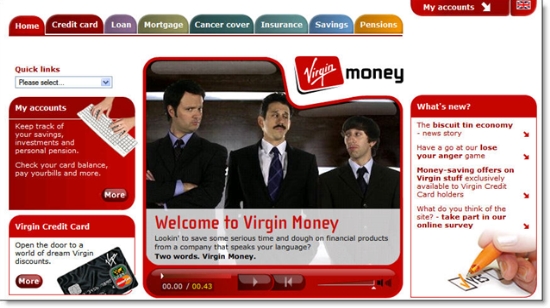(Originally published at NetBanker.com)
 The latest entry in the WAP camp is ING Direct, which recently began delivering Electric Orange checking account data to mobile phones at <ingdirect.com/m>. The "m" may become a trendy indicator for WAP sites, although most have put it in front of the URL, e.g., <m.google.com>, <m.yahoo.com>. The idea is to have as few keystrokes as possible without requiring a new URL to be memorized.
The latest entry in the WAP camp is ING Direct, which recently began delivering Electric Orange checking account data to mobile phones at <ingdirect.com/m>. The "m" may become a trendy indicator for WAP sites, although most have put it in front of the URL, e.g., <m.google.com>, <m.yahoo.com>. The idea is to have as few keystrokes as possible without requiring a new URL to be memorized.
How it Works
I used my new Samsung Blackjack with Windows Mobile to access ING Direct's Mobile Orange and almost made it into my account. The /m URL takes you directly to the login page where ING Direct uses the same two-factor Passmark/RSA-powered login on my Windows Mobile device as it does on a desktop browser.
In my test, I was able to enter my customer number, although it took a while before I realized I had to "double click" on the Enter button. Then I correctly answered the two security questions after several tries, and my personal picture and phrase were displayed. But I could go no further. ING Direct would not accept my PIN, which worked fine on the desktop moments earlier.
There are several explanations for my problem. It's possible that the bank wouldn't let me in because my desktop session was still active (doubtful). Or ING Direct may have mistakenly kept me out (doubtful). Or it could have been user error (likely).
Although, I used the correct PIN number, because of the limitations of my Blackjack, it's difficult to know whether you are typing numbers or letters from the keypad since they are asterisked out in the ING Direct input box on screen. I tried it with and without NUM LOCK pressed; then with SHIFT, then with FUNCTION. Anyway, I was locked out after five or six attempts, and now I can't get in from the desktop or mobile. Hopefully, it will automatically reset tomorrow so I can avoid a phone call to customer service.
Analysis
The reason I bored you with the details of my failed login is that it points out the serious usability issues with mobile banking. Delivering services to tiny screens with tiny keypads that may or may not have dedicated alpha and/or number keys makes the entire experience much less enjoyable. And it will create a new category of support call to customer service. These drawbacks will be fixed in time, but they will be a drag on adoption in the short term.
For more information on mobile banking, see our full report at Online Banking Report here.




















